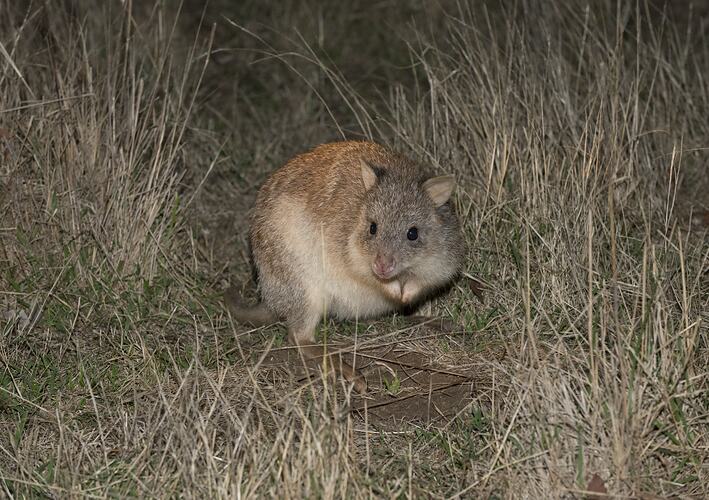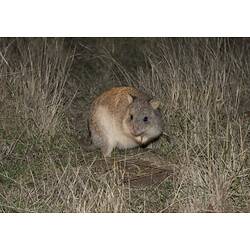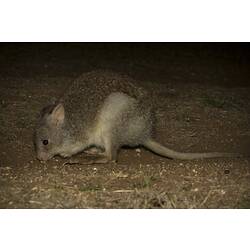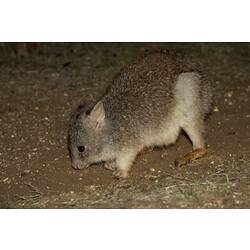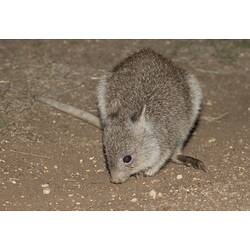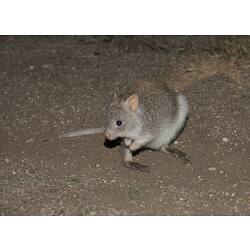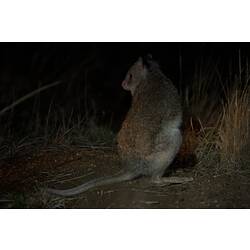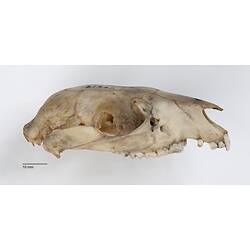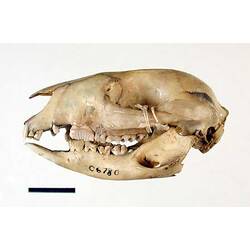General Description
Largest of the potoroids. Fur is shaggy grey with a rufous tinge on top; the underparts are pale grey. The tail is grey, sometimes with a white tip. Muzzle is short, with fur between the nostrils. Bare pink skin surrounds the eyes, and the ears are relatively long. Body length up to 48 cm.
Biology
A solitary species that shelters during the day in 'nests', shallow excavations with a dome of fibrous vegetation across the top and a single entrance. Multiple nests are often used by the same individual. They usually emerge shortly after dark to forage and primarily eat herbs, roots, tubers and fungi. They can cover large distances when foraging (2-4.5 km). Females are continuous breeders, with sexual maturity reached at around 11 months. Females raise one young per pregnancy, but exhibit embryonic diapause (the delaying of an embryo's development) and can have 3-4 young per year. Since European settlement numbers have declined with some populations becoming extinct. The main causes of these declines are predation by the red fox and domestic cat, competition with rabbits and the loss of suitable habitat for agriculture.
Distribution
Both sides of the Great Dividing Range from 100 m to 700 m in elevation.
Habitat
Coastal eucalypt forest, tall wet sclerophyll forest and dry open woodlands.
More Information
-
Animal Type
-
Animal SubType
-
Brief Id
Shaggy grey fur with a rufous tinge, grey tail and bare pink skin surrounding the eyes.
-
Colours
Grey, White
-
Maximum Size
48 cm
-
Habitats
-
Diet
Omnivore
-
Endemicity
-
Commercial
No
-
Conservation Statuses
IUCN Red List: Least Concern, FFG Threatened List: Regionally Extinct
-
Taxon Name
-
Common Name
Rufous Bettong
-
Other Names
Rufous Rat-kangaroo
-
Kingdom
-
Phylum
-
Subphylum
-
Class
-
Superorder
-
Order
-
Suborder
-
Family
-
Genus
-
Species Name
rufescens
